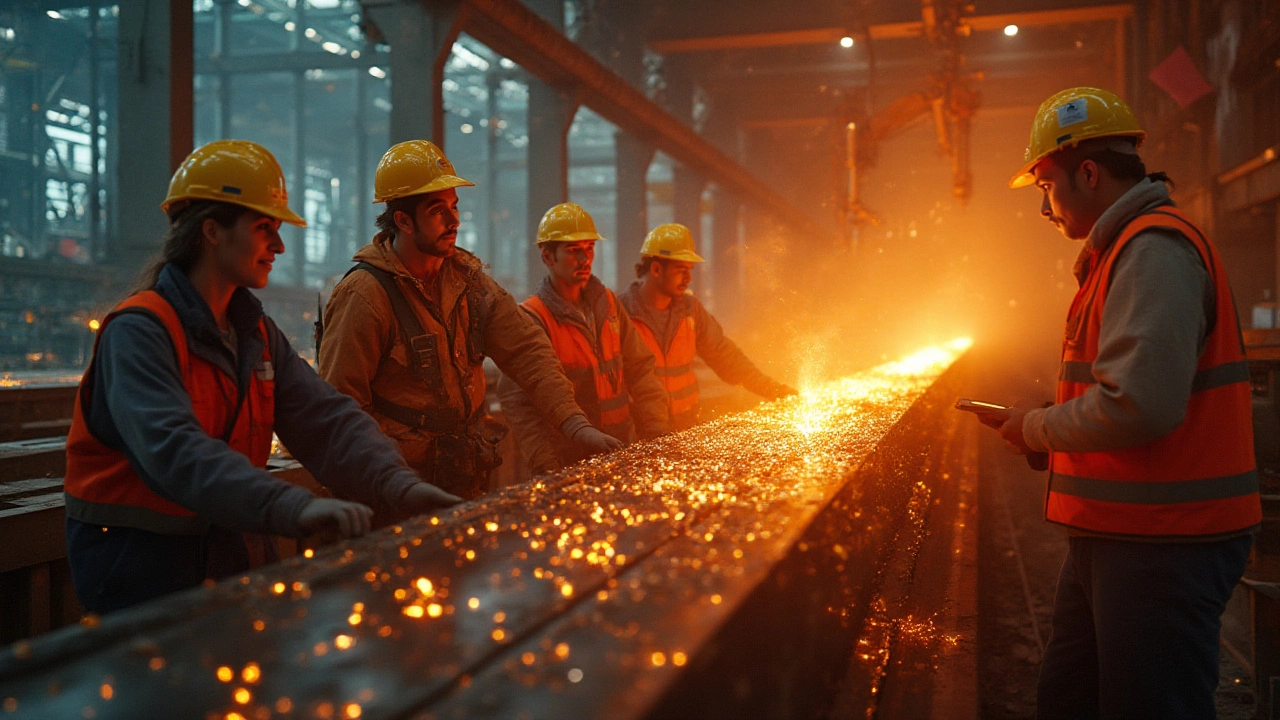Best Steel – What Makes It the Right Choice for Your Project
When talking about Best Steel, the highest‑performing grades of steel used in demanding industries. Also known as top-quality steel, it sets the benchmark for strength, durability, and reliability across many sectors. Choosing the right alloy can save money, boost safety, and extend the life of any construction or product. best steel isn’t just a buzzword—it’s a clear standard that engineers and fabricators rely on daily.
Why Choosing the Right Steel Matters
Steel Grades, specific classifications that define chemical composition and mechanical properties. Also called grade designations, they tell you exactly how a piece will behave under load, temperature, or corrosion. From low‑carbon mild steel to ultra‑high‑strength alloy, each grade serves a purpose. Selecting the best grade for a job eliminates over‑engineering and cuts waste, which is why grade knowledge is a core skill for any manufacturing team.
Understanding Manufacturing Processes, the methods like hot rolling, cold forming, and heat treatment that shape raw steel into finished parts. These processes determine grain structure, surface finish, and residual stresses, all of which influence performance. For instance, cold‑rolled sheets offer tighter tolerances, while heat‑treated bars achieve superior tensile strength. Knowing which process produced a piece helps you predict its behavior and match it to the right application.
Reliable Material Testing, the suite of inspections such as tensile, impact, and non‑destructive testing. Tests verify that the steel meets the promised grade standards and reveal any hidden defects. Industries ranging from aerospace to oil & gas rely on rigorous testing to avoid costly failures. When you pair testing data with grade specifications, you get a full picture of whether the steel truly qualifies as the best option for your design.
Industrial applications drive the demand for specific steel qualities. The automotive sector, for example, seeks high‑strength, lightweight alloys to meet fuel‑efficiency targets, while construction projects prioritize corrosion‑resistant rebar for long‑term durability. By mapping the requirements of each sector—such as impact resistance for mining equipment or heat resistance for power‑generation turbines—you can see how best steel choices directly influence project outcomes.
Cost versus performance is always a balancing act. Premium steels like dual‑phase or martensitic alloys carry higher price tags but often reduce overall material usage and maintenance costs. Conversely, standard carbon steels may be cheaper upfront but could require thicker sections or more frequent replacements. Evaluating life‑cycle costs alongside initial budgets ensures you pick a steel that delivers real value over time.
All these pieces—grades, processes, testing, and application demands—connect to form a clear decision framework. In the list below you’ll find articles that dive deeper into each area: from how daily watering affects container gardens (a surprising analogy for consistent material care) to the highest‑paying factory jobs that power the steel industry, and even the latest trends in plastic demand that compete for manufacturing resources. Together, they give you a rounded view of the environment where the best steel lives and thrives.
Which Country Makes the Best Steel? Comparing Steel Quality Worldwide
Curious about the world's best steel? Get the facts on which country leads in steel quality, innovation, and reputation. We break down what really makes a country's steel the best.
- manufacturing
- India
- food processing
- garden tips
- rice cultivation
- government schemes
- balcony garden
- urban gardening
- balcony gardening
- profitable business
- business ideas
- plastic manufacturing
- drip irrigation
- plant care
- steel manufacturing
- sustainable gardening
- startup ideas
- steel industry
- flower gardening
- textile manufacturers






